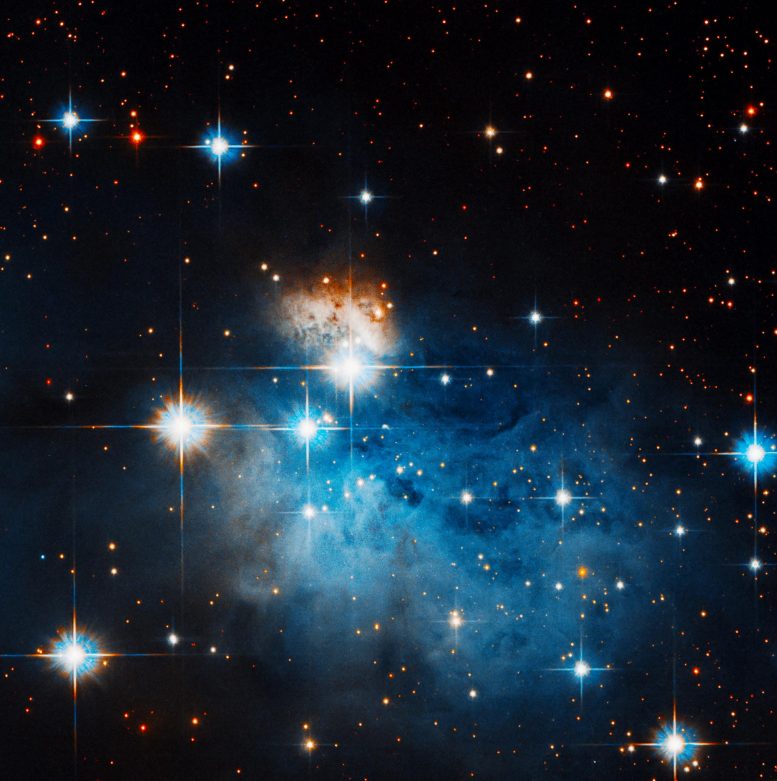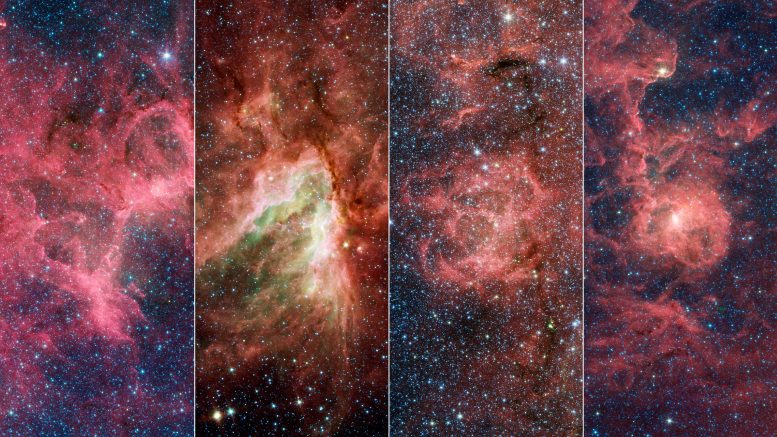Stunning Observation of a Dark Nebula

Credit: NASA, ESA, and R. Sahai (Jet Propulsion Laboratory); Processing: Gladys Kober (NASA/Catholic University of America)
This stunning image captures a small region on the edge of the inky Coalsack Nebula, or Caldwell 99. Caldwell 99 is a dark nebula — a dense cloud of interstellar dust that completely blocks out visible wavelengths of light from objects behind it. The object at the center of the image is a (much smaller) protoplanetary nebula. The protoplanetary nebula phase is a late stage in the life of a star in which it has ejected a shell of hydrogen gas and is quickly heating up. This stage only lasts for a few thousand years before the protoplanetary nebula’s central star reaches roughly 30,000 Kelvin. At this point, the central star is producing enough energy to make its surrounding shell of gas glow, becoming what’s known as a planetary nebula.
Caldwell 99 is a very prominent object in the southern night sky. On a clear night, it can be spotted easily with the naked eye as a dark patch, void of stars, next to the Southern Cross in the constellation Crux. It is easiest to spot in the Southern Hemisphere during the autumn. (Northern Hemisphere observers will want to be positioned near the equator and look for it in the springtime.)
Caldwell 99 is located 600 light-years from Earth and is about 100 light-years across.
Eagle, Omega Nebula, Trifid, and Lagoon: Four Famous Nebulae With Breathtaking Beauty

Shown here are the Eagle, Omega, Triffid, and Lagoon Nebulae, imaged by NASA’s infrared Spitzer Space Telescope. These nebulae are part of a structure within the Milky Way’s Sagittarius Arm that is poking out from the arm at a dramatic angle. Credit: NASA/JPL-Caltech
Nebula [ neb-yuh-luh ]: star-forming cloud of gas and dust. Noun, plural neb·u·lae [neb-yuh-lee, -lahy]
These four nebulae are known for their breathtaking beauty: the Eagle Nebula (which contains the Pillars of Creation), the Omega Nebula, the Trifid Nebula, and the Lagoon Nebula. In the 1950s, a team of astronomers made rough distance measurements to some of the stars in these nebulae and were able to infer the existence of the Sagittarius Arm. Their work provided some of the first evidence of our galaxy’s spiral structure. In a new study, astronomers have shown that these nebulae are part of a substructure within the arm that is angled differently from the rest of the arm.
A key property of spiral arms is how tightly they wind around a galaxy. This characteristic is measured by the arm’s pitch angle. A circle has a pitch angle of 0 degrees, and as the spiral becomes more open, the pitch angle increases. Most models of the Milky Way suggest that the Sagittarius Arm forms a spiral that has a pitch angle of about 12 degrees, but the protruding structure has a pitch angle of nearly 60 degrees.
Similar structures – sometimes called spurs or feathers – are commonly found jutting out of the arms of other spiral galaxies. For decades scientists have wondered whether our Milky Way’s spiral arms are also dotted with these structures or if they are relatively smooth.
No comments:
Post a Comment